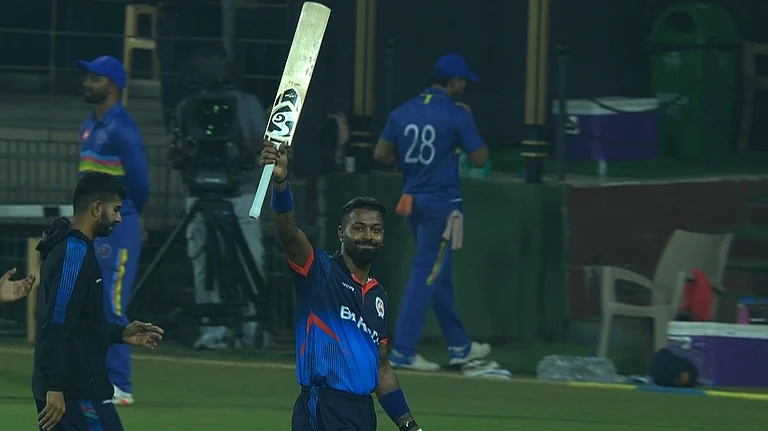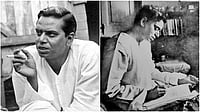‘Badla’, ‘Epic Battle’, ‘Revenge’, ‘Attack’. These aren’t words from Instagram posts documenting the ongoing genocide done by Israel in Gaza. These are how cricket tournaments are now spoken of, in a violent, aggressive country like India where even something as uniformly loved and benign as sport has been weaponised in language.
Broadcasters touted the much-anticipated India vs Australia World Cup Final as the epic ‘battle’ to witness. Casual conversations and WhatsApp messages were about decimating the opponent than winning against an exceptional team and emerging champions in a tournament of cricket. War-like verbiage of ‘badla’ of an erstwhile defeat continues to be deafening as after a heartbreaking loss, India were to face Australia again in the India-Australia series. Somewhere in aggression and violence, culturally we have forgotten that cricket in fact is an elegant game and must be respected as that. Conversations around the specifics of the game, the strategising winning would need, performance, and technique have been eclipsed by war-like cries to win.
This is part of a larger jingoistic narrative propelled and fueled by two defining tenets of culture — cinema and politics. Historically, India has culturally built a demon that we defeat to emerge righteous and victorious. A version of which can be found in culture and history. The Ramayana and ‘Mahabharata have prescribed definitions of good and evil, interpretations of which have pandered to patriarchal and popular beliefs around Brahmanical Hindu structures — where that version of ‘good’ defeated that idea of ‘evil’. In this fight, the language of war became mainstream since the actual settings were war themselves.
In modern Indian history, the fight against imperialism resulted in the overthrowing of the enemy — the British. After that, in the socialist era, the enemy became ideas of inequality, corruption, and privilege. They had to be engaged with and defeated collectively. It then became Pakistan where defeating it and ensuring it stayed defeated in war or sport became a predominant motif through every stage.
However, in the last few years, enemies are not ideas or any other country. Majoritarian India has identified a new demon —the Muslims— as those who need to not only be defeated but vanquished. And that is where language becomes aggressive. Labelling those who have understood the Quran as ‘jihadis’ and then promising India to be cleansed of them (hate speech made by Prabodhanand, a Hindutva leader in 2022), inciting Hindus to keep weapons at home. ‘Jai Shree Ram’ has moved from being a benign greeting to a full-fledged war cry that infuses fear in both the secular and the Muslims. It is the cry that is givem after an act of violence, whether lynching or destruction of physical structures. Killing is now considered the ultimate act of patriotism, with ‘goli maaron saalon ko’ not being penalised as hate speech. Language of war and destruction is now mainstream, validated by those in power. Leaders making these incendiary speeches are welcomed as heroes.
Hindi cinema has been perpetuating this language — across storylines, dialogue, and visuals. A look at the visual teasers of Singham Again: Deepika Padukone is in a police uniform, maliciously grinning at the camera, enjoying the violent power she wields as she puts a pistol in the mouth of a proverbial Mahishasur, as Shakti. Films like ‘Pathaan’ and ‘Jawan’ have kept situations of war at the centre, mainstreaming the violence that comes with it. Action is now aspirational, with ‘Fighter’ all set to release on the eve of the upcoming Republic Day, fueling the jingoism already widely celebrated. The Yashraj Spyverse has kept war at its base in different ways. Looking at different opponents.
The language of war becomes different from the language of just violence because the language of war not only exacerbates violence to an even more aggressive level but also makes it unapologetic, unchecked, and unquestioned. Given that war is meant to excuse brutality by the very nature of wanting to quell the enemy by killing it.
What makes this further problematic is that none of the films look at the impact of war on the oppressed or attacked with as much time, detail, politics, or even language. While ‘Oppenheimer’ looks empathetically at the conflicts of a scientist creating the worst weapon of war ever used, it fails to reinforce the massive extent of destruction it caused. And what it overlooks completely is the long-standing damage to civilians and the city the atom bomb was developed in. What was contaminated and how and what its result is today. This acute absence fails to bring to life the damage that the very idea of war can cause. In situations like this, the language of war gets adopted across verbal, physical, semiotic, and virtual, changing culture into a more aggressive, intolerant, unforgiving space.
Then comes the larger question of whose narrative, whose gaze and for whom. Representations within cinema on who is the perpetrator or initiator of war, and who is the messiah. ‘Pathaan’ changed this with its title itself where the Muslim was the patriot. However, for decades, we have seen only one representation of the terrorist, only one kind of terrorism and almost all of the terrorists are Muslim in films. As the genocide by Israel unfolds in front of our very eyes, the change in the language of reporting across media is indicative of its gaze. While people ‘are killed’ by Hamas in Israel, civilians ‘die’ in Gaza — completely absolving Israel of its ongoing attack on Gaza that has killed over 7,000 children so far.
Language is important. It shapes thought, ideas, beliefs, and culture. And when war enters verbiage, how will peace have a chance?
(Views expressed are personal)


























